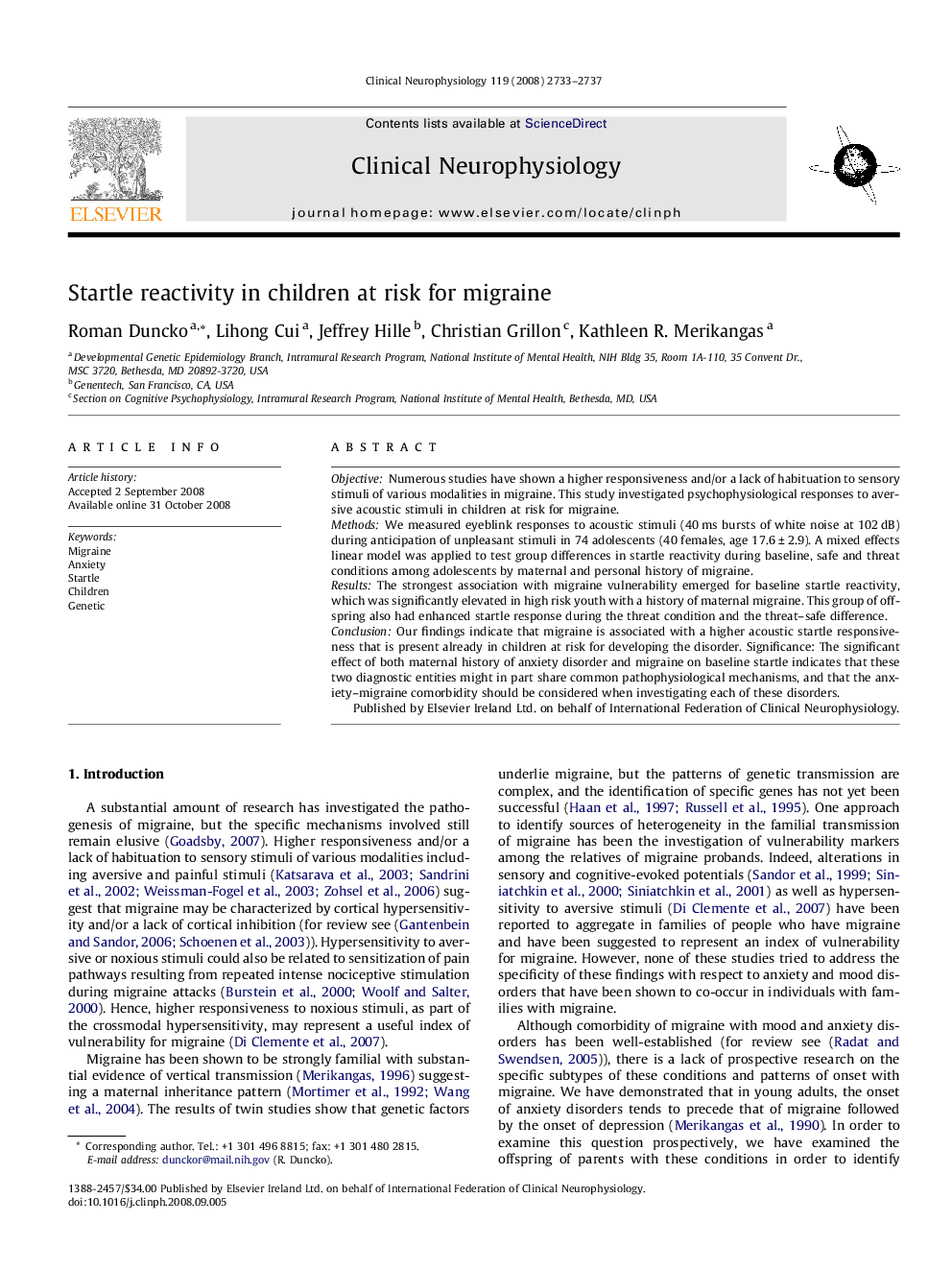| Article ID | Journal | Published Year | Pages | File Type |
|---|---|---|---|---|
| 3047555 | Clinical Neurophysiology | 2008 | 5 Pages |
ObjectiveNumerous studies have shown a higher responsiveness and/or a lack of habituation to sensory stimuli of various modalities in migraine. This study investigated psychophysiological responses to aversive acoustic stimuli in children at risk for migraine.MethodsWe measured eyeblink responses to acoustic stimuli (40 ms bursts of white noise at 102 dB) during anticipation of unpleasant stimuli in 74 adolescents (40 females, age 17.6 ± 2.9). A mixed effects linear model was applied to test group differences in startle reactivity during baseline, safe and threat conditions among adolescents by maternal and personal history of migraine.ResultsThe strongest association with migraine vulnerability emerged for baseline startle reactivity, which was significantly elevated in high risk youth with a history of maternal migraine. This group of offspring also had enhanced startle response during the threat condition and the threat–safe difference.ConclusionOur findings indicate that migraine is associated with a higher acoustic startle responsiveness that is present already in children at risk for developing the disorder. Significance: The significant effect of both maternal history of anxiety disorder and migraine on baseline startle indicates that these two diagnostic entities might in part share common pathophysiological mechanisms, and that the anxiety–migraine comorbidity should be considered when investigating each of these disorders.
